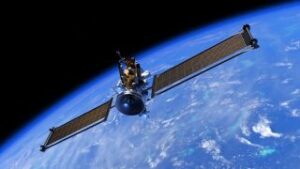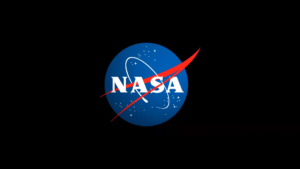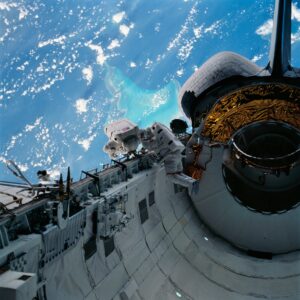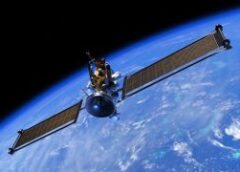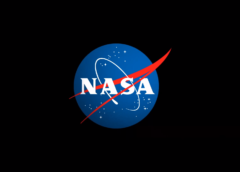The CubeSats from NASA’s ELaNa 38 mission were deployed from the International Space Station on Jan. 26, 2022. Seen here is the deployment of The Aerospace Corporation’s Daily Atmospheric and Ionospheric Limb Imager (DAILI). NASA Despite their small size, the satellites launching through NASA’s CubeSat Launch Initiative (CSLI) missions have a big impact, creating access to space for many who might not otherwise have the opportunity. One recent mission tells the story of four teams of researchers and engineers who conceived, built, launched, and collected data from these shoebox-sized satellites,…
Read MoreNuclear-powered Dragonfly mission to Saturn moon Titan delayed until 2028, NASA says
NASA has set a provisional launch date of July 2028 for its Dragonfly mission, meant to explore Saturn’s largest moon Titan, with budgetary uncertainty cited as the reason for the project’s one-year delay. The Dragonfly team can now move forward with the next stage of development — Phase C — for the car-sized, nuclear-powered rotorcraft drone that will fly above and land on the sands of Titan, a world planetary scientists believe is rich in organic molecules. “The Dragonfly team has successfully overcome a number of technical and programmatic challenges…
Read MoreNASA Delivers Inclusion Message to Annual Bayou Classic Participants
1 min read Preparations for Next Moonwalk Simulations Underway (and Underwater) NASA Stennis Test Operations Chief Maury Vander speaks with a young visitor to the NASA booth during the 2023 Bayou Classic Fan Fest event in New Orleans on Nov. 25. NASA / C. Lacy Thompson NASA was on full display during the 50th Annual Bayou Classic Fan Fest activity in New Orleans on Nov. 25, hosting an informational booth and interacting with event participants to deliver a clear message – There’s Space for Everybody at NASA. In addition to…
Read MoreHere’s what astronauts in orbit around Mars would see from their spacecraft
Have you ever wondered what it might be like to view Mars from the vantage point of a spacecraft in orbit above the Red Planet? New images from NASA’s Mars Odyssey Orbiter capture what Mars would look like when viewed from above. Mission scientists recently rotated Odyssey toward the Martian horizon for one complete orbit to capture the new imagery of the Red Planet, revealing deep craters and diverse cloud structures as astronauts orbiting Mars would expect to see them. “If you were an astronaut, the first thing that would…
Read MoreFor Henry Kissinger, NASA’S Apollo 11 lunar landing was about more than the moon
Henry Kissinger, the legendary statesman who served as Secretary of State under Presidents Richard Nixon and Gerald Ford, passed away yesterday at the age of 100. An official statement from Kissinger’s New York City-based consulting firm confirmed that the longtime political figure and foreign policy architect died on Wednesday (Nov. 30) at his New England residence in Connecticut. While Kissinger is remembered most for his hawkish foreign policy positions, the former Secretary of State played a key role in promoting the success of NASA’s Apollo 11 mission in landing on…
Read MoreNASA Conducts Annual Moon to Mars Architecture Concept Review
Architecture Concept Review attendees listen to welcome remarks from NASA leadership on Nov. 14, 2023, at NASA’s Kennedy Space Center in Florida. Attendees included representatives from all of NASA’s centers, leaders from all of NASA’s mission directorates, various technical authorities, and other stakeholders across the agency. NASA/Kim Shifflett NASA hosted its second annual Architecture Concept Review in mid-November, bringing together leaders from across the agency to discuss progress on and updates to NASA’s Moon to Mars architecture since NASA released outcomes from its first such review in April. As NASA…
Read MoreGlobular Cluster Omega Centauri Looks Radiant in Infrared
A cluster brimming with millions of stars glistens like an iridescent opal in this image from NASA’s Spitzer Space Telescope. Called Omega Centauri, the sparkling orb of stars is like a miniature galaxy. It is the biggest and brightest of the 150 or so similar objects, called globular clusters, that orbit around the outside of our Milky Way galaxy. Stargazers at southern latitudes can spot the stellar gem with the naked eye in the constellation Centaurus. Globular clusters are some of the oldest objects in our universe. Their stars are…
Read MoreThe Marshall Star for November 29, 2023
15 Min Read The Marshall Star for November 29, 2023 Artemis II Crew Enjoys Visit with Marshall Team Members By Wayne Smith From talking about continuing the legacy of NASA’s Marshall Space Flight Center in space exploration to describing their roles in an upcoming historic mission, Artemis II astronauts enjoyed visiting with center team members Nov. 27. The crew will be the first to ride aboard NASA’s SLS (Space Launch System) rocket and Orion spacecraft. They will launch atop the rocket to venture around the Moon on Artemis II, the…
Read MoreISS astronauts watch Russian cargo ship burn up in Earth’s atmosphere (photos)
Astronauts aboard the International Space Station got a front-row seat to some rare atmospheric “fireworks.” On Wednesday (Nov. 29), the Russian Progress MS-23 cargo spacecraft departed from the International Space Station (ISS) with a load of refuse no longer needed on the orbital outpost. Specifically, the spacecraft was carrying “old equipment and household waste, or everything the experts have decided to toss from the station,” Roscosmos cosmonaut Oleg Kononenko told Russian media outlet TASS. Just four hours after Progress MS-23 undocked, NASA astronaut Jasmin Moghbeli was able to locate the…
Read MoreNASA Remembers Trailblazing Astronaut, Scientist Mary Cleave
NASA Astronaut Mary L. Cleave. April 8, 1985 NASA Retired NASA astronaut Mary Cleave, a veteran of two NASA spaceflights, died Nov. 27. She was 76. A scientist with training in civil and environmental engineering, as well as biological sciences and microbial ecology, Cleave was the first woman to serve as an associate administrator for NASA’s Science Mission Directorate. Born in Southampton, New York, Cleave received a Bachelor of Science degree in biological sciences from Colorado State University, Fort Collins, in 1969, and Master of Science in microbial ecology and…
Read More